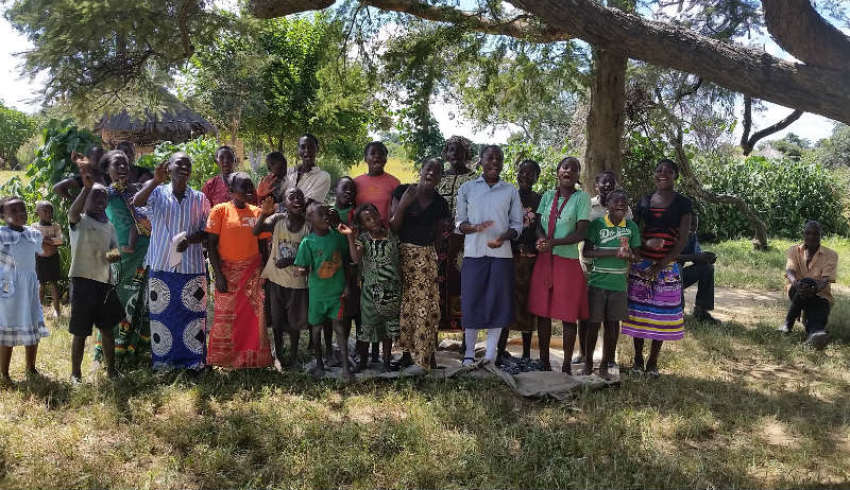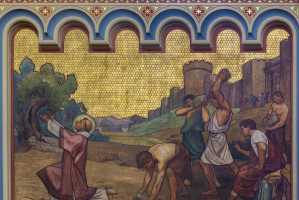Sickness, Discomfort and Death: the Fate of Families and Children With No Access to Clean Water (CP in Zambia - Part 1)
CP Was Invited by World Vision Zambia to Meet With Villagers Impacted by Their Water, Hygiene and Sanitation Programs
The borehole has not only allowed the Buumbas to experience for the first time the taste of clean water and created room for the children to focus on school full time, but the water pump has brought the community together.
"Let me tell you, that borehole is a unifying factor for the future of these children because that same borehole has brought us together in the manner that all children have seen that that borehole is bringing us together, not only benefiting from the water but also building the relations," Bazaar Buumba said, also present that day with villagers gathered at his home.
"The way things have changed, if I try to compare the time I came here in 1963 — we've been drinking this dirty water not just here but it was at the dam where I was drinking that water. Now, when you compare with the water that we are drinking now you realize that things have changed," he added.
"I can't remember a time when I've had the stomach living quietly," Mr. Buumba said. "It would be bubbling all the time and also stomach pain would be continuous. But when we started drinking this clean water, this is no more. So now I am able to tell that the water that we were drinking was causing the stomach pains."
Mr. Buumba's comments reflect a common theme heard among the villagers CP visited: ignorance that it was the unsanitary water they had been drinking for years, or decades that had been making them sick. Like Mr. Buumba, the realization of that reality only dawned on them once there was another experience — that of drinking clean water — to compare to their life-long one of drinking dirty water to quench their thirst.
Villagers who drink dirty water do so because they do not have access to any clean water. In some cases, as previously stated, they share these water sources with animals that not only drink the water but bathe in it. Some people do the same, in addition to using the water source as a restroom. Occasionally, there are mosquitoes in the water and the appearance of green and white discolorations on the water's surface. The water tastes salty, some villagers said, and is sometimes difficult to swallow. But they swallow the dirty water because there is nothing else to drink.


Not far from the Buumbas, their neighbors and their children was a Wesleyan church situated a stone's throw from a highly-trafficked health center. There was also a water pump in the vicinity, one installed by another humanitarian group working in Zambia. It was here that this CP reporter witnessed two sisters, one aged 6 and the other aged 3, do something very normal — catch water from the pump. But, it was what happened afterward that was startling.
The little girls each took one of the 10-15-liter containers that the eldest had filled with water and went on their way, walking back to wherever they had come from. The older one carried her grey bucket atop her head, while her little sister, about half her size, picked up a yellow container. The little one bore the weight as best as she could, and stopped intermittently to get a break from the burden.

It had been made clear by the second day of CP's visit to Zambia that fetching water in rural villages was traditionally women's work, while boys might help their fathers take care of cattle or with small construction projects on the homestead. Children start household chores at a young age. It is common for school children to rise early in the morning along with their parents to get their chores out of the way before walking, sometimes for hours, to school.
According to Kaumba, the World Vision Zambia communications officer serving as the primary guide and translator, the government mandates that children enroll in school by age 7. That is a law Zambians are more than happy to obey, when they have the money to pay the school feels to make that happen.
Bulanda village, home to the singing Mira Buumba, is about a four-hour drive from the vibrant and fast-moving capital, Lusaka.
Zambians living in the quiet and expansive countryside, where long, winding dirt roads, open blue skies and far-reaching cornfields are commonplace, account for 60-65 percent of the south African country's population, Kaumba told us during a bumpy ride along one of those winding dirt roads.
Bordering Zambia is Tanzania to the north, Malawi and Mozambique to the east, Zimbabwe, Botswana and Namibia to the south, and Angola and the Democratic Republic of Congo on its western borders.
Based on 2010 estimates from the World Bank, 49 percent of those living in rural areas have access to "an improved water source" compared to 85 percent among the urban population. The unemployment rate is about 17 percent nationally, though Zambians aged 25-35 account for 89 percent of that figure and most of them live in urban areas.
Life in the countryside is much different from the city, where big churches, modest apartment complexes, and art deco restaurants are pervasive. Women wear jeans and leggings and straighten their hair with relaxers, and wear braids or other styles. As early as 7 a.m., roads are nearly congested with pricey-looking cars, trucks, and other vehicles. Some of these "other vehicles" include independent jitneys, vans that pick up people along the road for a fee and are driven by men who behave as if they own the roads — or so driver Keza informed the visiting group.
In rural areas, ox buggy carts, bicycles, and the occasional truck are more likely to appear on the rocky, red dirt roads sometimes blanketed by tall grass and fields of corn, a staple crop for the country, which was experiencing a severe drought during CP's visit. Women wear their hair natural, avoid makeup and wear chitenges, colorful traditional fabrics wrapped around the waist usually over whatever clothes they might already be wearing. More than anything in the countryside, one notices people, particularly small clusters of uniformed children, some of them wearing shoes, walking along the roads — to school, a clinic, their neighbors, a marketplace, or elsewhere.
Before leaving Ms. Buumba and her family and their neighbors, CP asked the dozen or so children gathered under the shade of the trees a rather mundane question — what they would like to be when they grow up.
Among the children gathered were Ruth, 15; Loneitia, 16; Precious, 6; Aven, 8; Beauty, 13; Michelo, 17; and Dorcas, 10. They expressed that they held dreams of becoming nurses, police officers, teachers, or joining the military — vocations that reflect their desire and expectation of serving others.
Thanks to the new borehole and the community's determination to keep it functioning, those dreams may one day become reality.




























